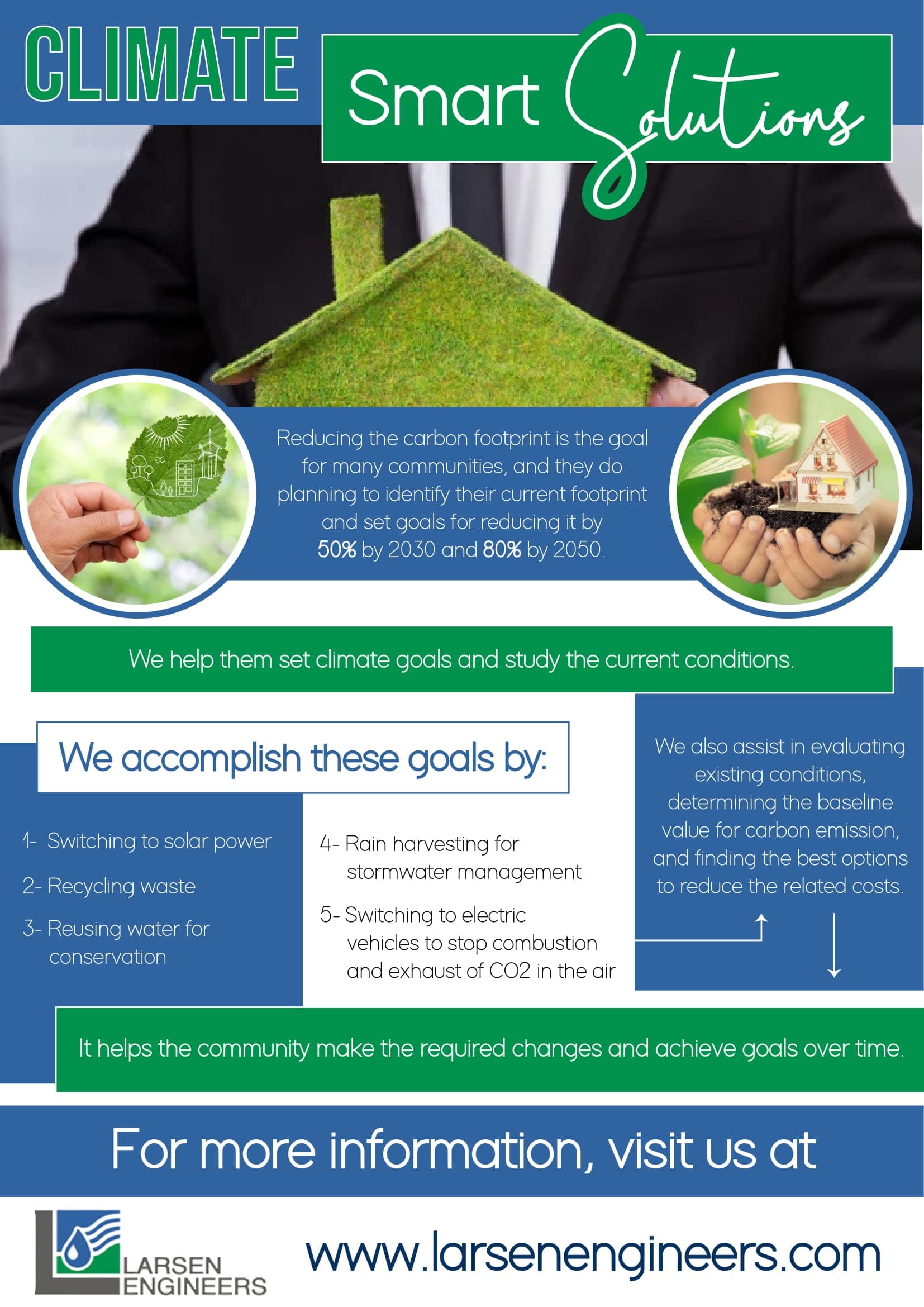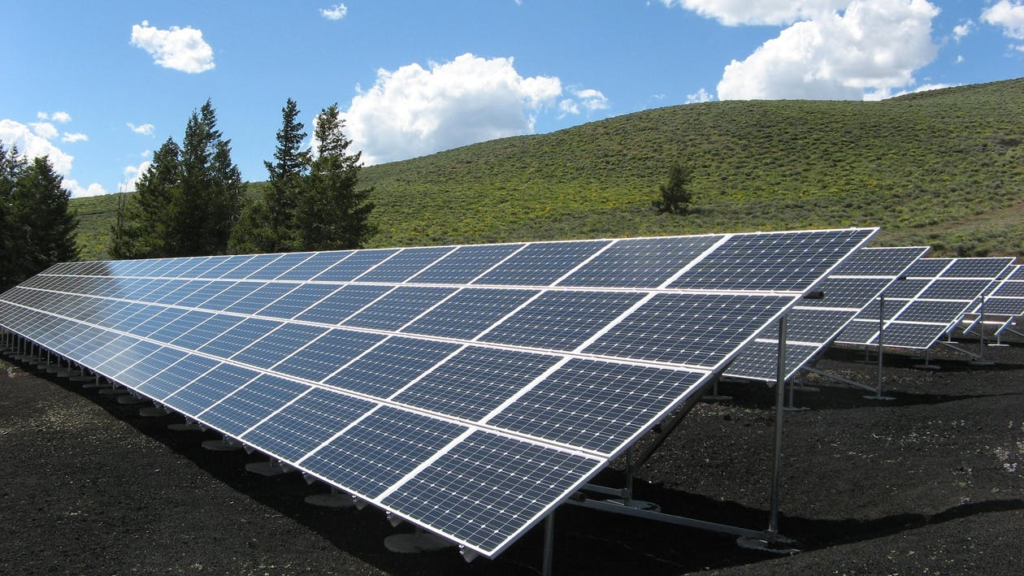Reducing the carbon footprint is one the main goals for many businesses and communities. Find out some climate smart solutions that you should implement.

Reducing the carbon footprint is one the main goals for many businesses and communities. Find out some climate smart solutions that you should implement.

As the electricity costs in the US continue to increase, many people are considering alternative energy sources to reduce their current utility bills. Lots of homeowners in the country are considering installing solar panels to reduce their carbon footprint and save money.
It’s, however, important to note here that installing solar panels is a huge undertaking, and many people can’t afford it. The best way to overcome this problem is to use community solar in low to moderate-income residential developments.
Distributed solar photovoltaic (PV) systems are becoming increasingly popular in the US, and their associated costs are also reducing swiftly. New York’s Green New Deal initiative (the state’s goal for 100% carbon-neutral power generation by 2040) and the Clean Energy Standard (the state’s goal to produce 70% of the electricity using renewable energy by 2030) are expected to bring economic development and employment opportunities for the residents in low to moderate-income areas.
New York’s public and private housing authorities can use community solar to seamlessly achieve these sustainability goals and rapidly improve the current economic state of low to moderate-income residential developments.
Community solar, also known as shared solar or solar garden, provides renters, homeowners, and businesses equal access to solar and allows them to gain the environmental and economic benefits of solar energy generation without installing a solar panel in their home or commercial facility.
Here are the core principles of an effective and fair community solar project.
Site selection plays a key role in determining the efficacy of a renewable energy project.
To put minimum stress on infrastructure, try brownfields and grey fields instead of green fields. But, make sure you’re installing the solar panels at locations from where they can receive sunlight throughout the day. Seek help from a LEED-certified company to make sure you’re complying with sustainability standards.

Headquartered in Rochester, New York, Larsen Engineers is a renowned multi-disciplinary firm that provides solar energy consulting services, civil and environmental engineering, structural engineering services, construction phase services, anaerobic digestion services, consulting engineering services, and LEED-certified municipal engineering services to our clients.
Contact us today for more information.
Retrofitting is about adding new tech-oriented features to a property. The process has more than one advantage and is often performed to assist buildings with better tech solutions. Retrofitting solar panels over roofs for electricity generation is a recent technique and works wonders for sustainable communities.
Retrofitting photovoltaic panels helps create solar roofs. The more panels are installed, the greater electricity production is possible for commercial use.
The EIA estimates commercial energy consumption to increase by 1.5% every year. This can greatly impact fuel consumption globally. Solar power helps lower fuel consumption by using solar energy to create electricity. The commercial sector has a huge takeaway from the technology as their energy consumption is more excessive than residential consumption.
Larsen Engineers believes in conserving as much energy as possible for future generations! Call us for a climate-smart community consultation!
The Pembina Institute issued a summary of the deep retrofitting of photovoltaic panels on commercial buildings. While the panels provide clean electricity, they could help with future budgeting and cash flows.
On-site retrofitting can generate more electricity without requiring excess acres. The cost of transportation and electricity distribution is also reduced. The technology is efficient in reducing power failures with its energy storage facilities.
Since 2018, 1,770 solar panel systems having a capacity of 14 megawatts have been installed in British Columbia, Canada. Even the cost of installation is decreasing as the technology becomes more popular. The cost of installing solar panels has come down 60% from their inception.
With a retrofitting model, you add extra energy efficiency to your house while going for an efficient structural plan for your roof. Integrating solar panels within the roofs of commercial buildings is not a time-taking process. The panels can be directly fastened to the roof deck without drilling through the roof.

You’re not consuming electricity from the grid anymore! This helps save energy costs and hefty energy bills. Commercial buildings can have their electricity production models retrofitted on their roofs. The mechanism is highly economic for beginner smart communities. Municipalities should also consider the mechanism for residential owners who can afford the photovoltaic cells.
We offer consultation for smart communities and environmental engineering projects. Reach out to us for community planning consultancy and construction management services.
There’s no greenhouse gas emission during solar panel usage. PV systems have a life of around 30 years. This means the carbon emission and control model would come directly into effect with retrofitting solar panels on rooftops. Not just for commercial buildings, but installing PV systems on arid farmlands would benefit farmers with cheap energy as well.
For more advice on clean energy vehicles and smart community grant services, contact Larsen Engineers. The New York-based firm has worked with numerous government bodies to initiate energy conservation services for new communities. The LEED projects by the firm offer energy-saving solutions for housing and commercial properties.
To hire our services, call us at (585) 272.7310.
While many homeowners and business organizations adopt environmentally sustainable practices, low-income families still do not have sufficient resources to reap the benefits of this green revolution. The initial investment required for a solar roof-powered building in Rochester, NY, is unaffordable for many working-class citizens who wish to use renewable energy daily. Community solar planning in Rochester offers the perfect alternative for these households. Here are a few benefits of these solar energy projects and the reason why they are worth the investment.
The installation of a solar panel is not possible on certain rented properties and homes without a suitable roof. A solar community project offers the same benefits to all the homes in the area, regardless of their living arrangement. Whether a family owns the property or not, they can utilize green energy for their daily household needs.
Each homeowner doesn’t have to go through the trouble of installing solar panels. The entire community can enjoy the benefits of renewable energy from a single source.
The homeowners within New York’s communities can purchase solar panels on flexible financing terms due to the incentives offered by NYSERDA. This will make solar energy much more affordable for low to medium-income households across the state.

Utility bills account for a large portion of the monthly expenditures for any low-income household. With the help of a community solar plant, these bills can be substantially reduced, raising the living standard of these underprivileged areas.
Community solar projects can make our neighborhoods independent and provide a constant supply of energy regardless of global market rate fluctuations.
Solar energy is an ultimately environmentally friendly alternative for fossil fuels and their derivatives. The air, water, and land pollution caused by fossil fuel consumption can be eliminated with countrywide community solar projects.
Fossil fuel production and consumption are the biggest culprits behind climate change. With the help of Larsen Engineers’ climate-smart community planning consultants, we can contribute to a green and sustainable tomorrow. Our clean energy community engineering services offer you many effective ways to reduce your carbon footprint and save the planet from the catastrophic consequences of global warming.
Visit our website and learn more about our services.